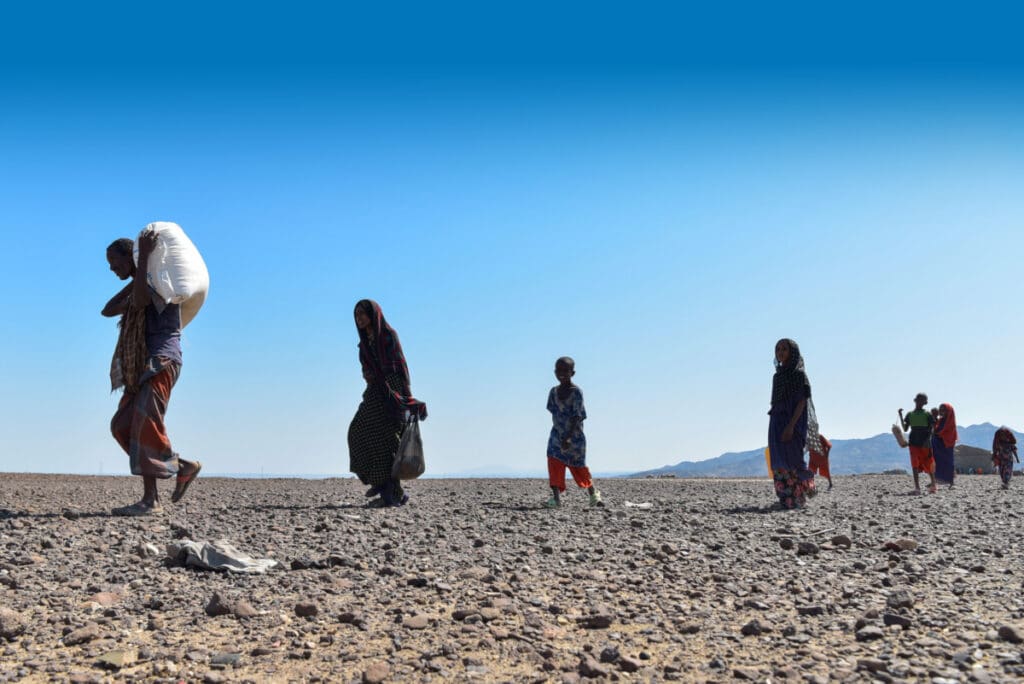World Food Program USA’s New Report Shows Hunger as Driving Force of Conflict

Comprehensive review finds that food-related instability linked to the climate crisis, resource conflict and economic shocks is contributing to
a vicious cycle of hunger and conflict
WASHINGTON, DC (April 6, 2023) – World Food Program USA today released a new report – Dangerously Hungry: The Link Between Food Insecurity and Conflict – which examines the ways hunger acts as a driver of conflict around the world. While it has long been known that conflict produces food insecurity, Dangerously Hungry explores that relationship in the inverse. Such a finding illustrates how ending hunger is not only a moral imperative but also a key to national security interests.
“That war inevitably produces poverty and hunger has been proven true in every major conflict across human history. But it is also true that hunger can lead to instability. There is a vicious feedback loop between conflict and hunger currently at play in dozens of countries around the world,” said Dr. Chase Sova, senior director of public policy and research and lead author of the report.
A follow-up to World Food Program USA’s 2017 report, Winning the Peace, today’s report is a comprehensive review of 60 new peer-reviewed academic studies that explicitly test food insecurity’s impact on conflict. The report identifies and groups 12 drivers of food-related instability (e.g., crop yields or high food prices) into three main categories: the climate crisis, resource conflict and economic shocks. These drivers are linked to eight distinct types of instability ranging from protests and riots to civil war.
The report highlights several emerging themes. Conflict between pastoralist and agricultural communities over land and water resources continues to lead to violence and instability in the African Sahel. The current global food price crisis, meanwhile, bears remarkable resemblance to 2007/8, when rapidly rising food prices caused unrest in nearly 40 nations. Food price riots and protests are most common in urban areas while more extreme forms of food-related instability, like terrorism and civil war, often begin in rural areas farther from the reach of government authorities.
“As global hunger reaches record highs, instability is predictably increasing in tandem. If leaders and policymakers don’t do everything in their power to end the current hunger crisis, we will feel the repercussions around the world. This report should be an eye-opener to us all,” said Barron Segar, president and CEO of World Food Program USA.
The authors are clear to note that people experiencing hunger are not always violent. Food insecurity rarely produces conflict on its own. Instead, people must also be motivated to choose conflict over peace, a choice often resulting from desperation, past grievance or poor governance. Perceived threats to food availability can also trigger instability even before hunger strikes.
Academic literature on food-related instability has grown significantly in recent years. Almost half of all research on food-related instability over the past 20 years has been produced in the last five years alone. Within that research, the climate crisis has emerged as a major contributor, with half of all peer-reviewed studies in Dangerously Hungry examining food-related instability through the lens of climate.
With Russia’s invasion of Ukraine, the lingering economic impacts of the Covid-19 pandemic, and a rise in climate-related extreme events around the world, 2022 was a year of record-high global hunger. Predictably, global instability has risen as well. At least 12,500 protests occurred last year in countries facing rapid food and fuel price increases, with headline grabbing demonstrations occurring in at least 20 countries.
“We are now less than a decade away from the Sustainable Development Goal of ending global hunger by 2030, so the message is urgent and loud: We know Zero Hunger will not be achieved without first putting an end to conflict. What Dangerously Hungry also demonstrates is that ending conflict will not be possible if food insecurity itself is allowed to metastasize into unrest and violence,” concludes Sova.
Download the full report at www.wfpusa.org/dangerouslyhungry.
About World Food Program USA
World Food Program USA, a 501(c)(3) organization based in Washington, DC, is a catalyst for fundraising, advocacy and engagement across the United States in support of the U.N. World Food Programme’s mission to end global hunger. To learn more about World Food Program USA’s mission, please visit wfpusa.org/mission-history.
About the United Nations World Food Programme
The United Nations World Food Programme is the 2020 Nobel Peace Prize Laureate and the world’s leading humanitarian organization, saving lives in emergencies and using food assistance to build a pathway to peace, stability and prosperity for people recovering from conflict, disasters and the impact of climate change.
Media Contact:
Abigail Seiler
Senior Manager, Public Relations
World Food Program USA
aseiler@wfpusa.org
443-843-4368 (cell)




